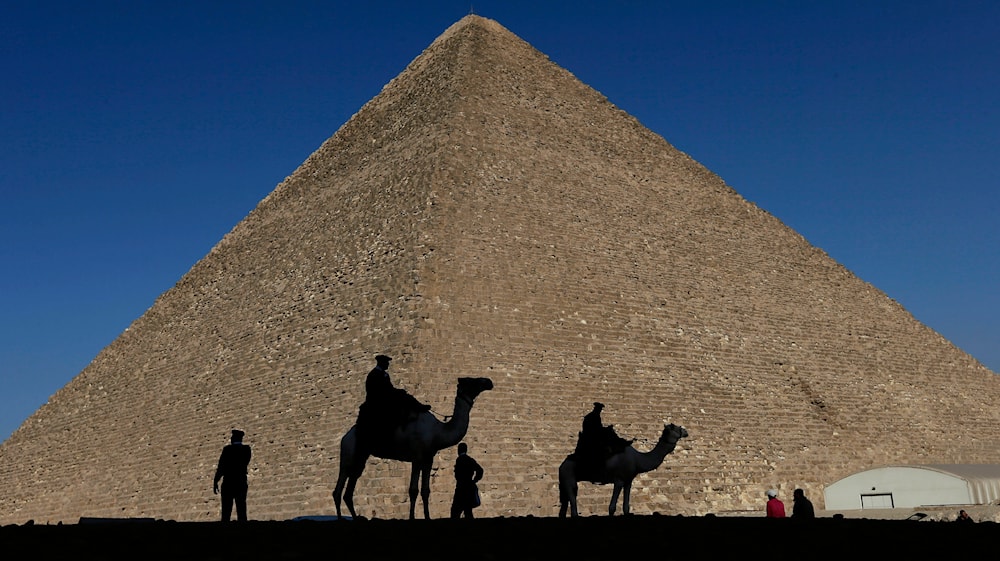Egypt cancels plans to restore Giza pyramid after int'l controversy
'The Project of the Century' is now back on the shelf after a committee from Egypt's Tourism Ministry exposed its threat to the country's valuable reputation for antiquities.
-

Policemen are silhouetted against the Great Pyramid in Giza, Egypt, December 12, 2012. (AP)
In a statement released by a committee formed by Egypt's Tourism Minister, the country has decided to scrap plans to reinstall granite cladding on the pyramid of Menkaure, the smallest of the three great pyramids of Giza, which Mostafa Waziri, the secretary general of the Supreme Council of Antiquities, last month called “the project of the century”.
The backtracking follows a rise in international and public outcry regarding the plan, as the pyramids are the only one of the seven wonders of the ancient world that remain.
The statement said: “The Menkaure pyramid review committee has unanimously objected to the reinstallation of the granite casing blocks, scattered around the base of the pyramid since thousands of years ago”.
Zahi Hawass, a former minister of antiquities and leader of the committee, claimed it would be difficult to locate where each block was, and replacing them would call for cement, a material that would ruin the pyramid.
Read next: Egypt unveils ancient 'secret keeper' tomb, golden mummy
“What I want to say is don’t worry, the pyramids of Giza are safe, and nothing will happen to them,” Hawass told Reuters, noting: “People everywhere are calling me, writing letters, emails. They are worried. Don’t be worried at all, the pyramids are safe, and no one can touch the pyramid of Menkaure.”
'Don't rush'
The committee, consisting of seven experts, initially allowed the excavation of the Menkaure pyramid’s boat pits, akin to the Pharaonic bark pits found next to Khufu’s pyramid, but only after a “clear and detailed scientific study”.
“In archaeology, don’t be in a hurry. If you are in a hurry, you will ruin the site,” Hawass said. “It is important for any kind of work to be done at the site of the pyramids, is to make a study and to tell us what to do.”
Archeologists and social media users were distressed after the plans were revealed, describing this initiative as "a sad disaster" while comparing it to the straightening of the Leaning Tower of Pisa.
In a video on January 25, Waziri announced the project, a three-year project to restore the facade of the pyramid, which previously had 16 layers of granite, by using granite blocks lying at its base.
He stated that this was a joint project with the Japanese government and Japanese Egyptologist Sakuji Yoshimura, who attempted to build a pyramid in 1979 but failed.
It is important to note that some of the blocks missing from the pyramid were once used by King Ramses II to make statues and reliefs. Over the centuries, the pyramid’s other granite blocks were used to construct buildings, arsenals, and infrastructure.

 3 Min Read
3 Min Read








